Garden visits, Dumfries and Galloway 24-28 June, 2018
On the warm, sunny afternoon of Sunday 24 June, 48 MPG members, variously arriving by train and car, gathered at the Cally Palace Hotel, Gatehouse of Fleet, an imposing Georgian mansion. Those who had arrived early enough made their way to the Cally Gardens Nursery which has recently been bought by RHS Gold Medal winner and committee member, Kevin Hughes, a plant hunter, who previously had a nursery in Wiltshire.
The nursery was typical of the large walled kitchen gardens that provided houses of the size of Cally House with fruit, vegetables and cut flowers, and contains a number of hot houses and cold frames, most of which have fallen into disrepair, as well as modern-day polytunnels . Since 1987 it had been owned by the plantsman Michael Wickenden, who tragically died plant hunting in Myanmar in 2016. Kevin hopes to expand the collection with his own unusual perennials and hardy plants. He readily admitted that he had taken on a huge project, hampered by listed status and bureaucracy, but determination and hard work seem in abundance.
Returning to the hotel in good time, members assembled in the conference room at 6pm for the AGM, details of which may be found in the Members’ Forum area of the website.
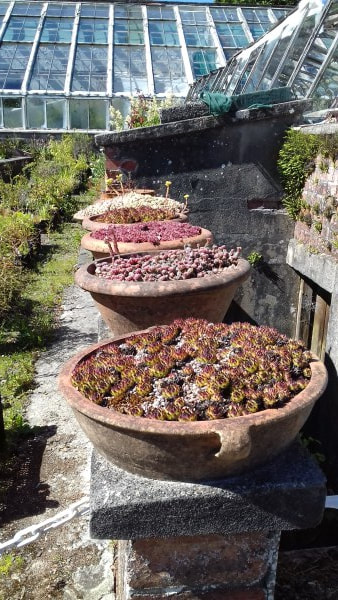
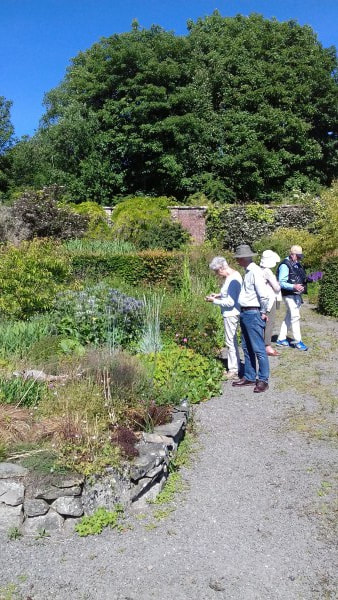
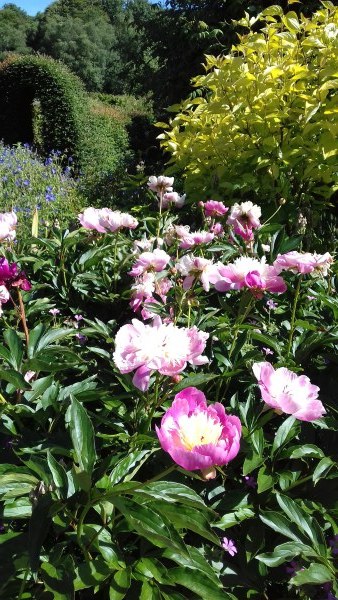
Day One
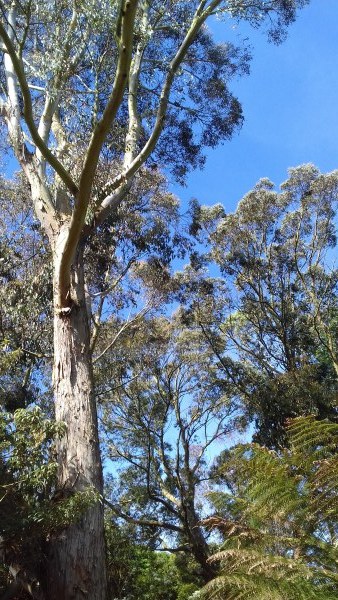
Another bright, sunny day and we arrive at Logan Botanic Garden in the Rhins of Galloway south of Stranraer. Entering past a Scottish bothy we immediately found ourselves in the Australian bush with eucalyptus towering in the woodland garden to our left. Here one half of the group was taken round by garden supervisor, Colin Belton; the other half being led by the curator, Richard Baines. Given a potted history, we learnt that the land had been in the McDouall family since the 13th century and the gardens had developed over several hundred years and included many finds from the early plant-hunters. In the early 20th century two McDouall brothers constructed their famous peat walls for the many acid-loving plants and the first eucalyptus, one of what are now 40 different species, was planted. In 1945 the estate passed to cousins, the Buchan-Hepburns, and in 1969 Logan was gifted to the Royal Botanic Gardens Edinburgh.
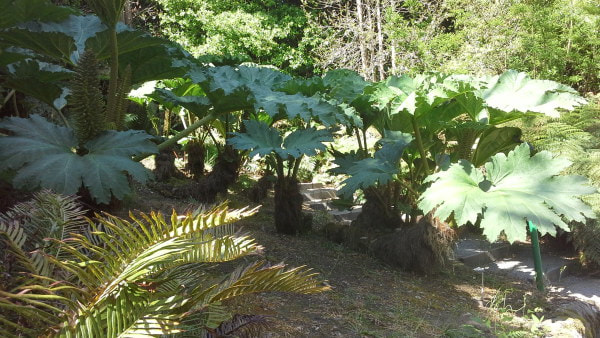
Due to the mild climate, courtesy of the Gulf Stream, Logan is able to grow outdoors many southern hemisphere trees and plants that elsewhere in the UK have to be grown in glass houses. These include some rare rhododendrons (Himalayas/SW China) which form part of the National Collection: R.edgeworthii ‘Logan Dream’ and the very rare R.dalhousiae var. rhabdotum. Its other exotic treasures include Dicksonia antartica tree ferns, Cordyline australis cabbage palms, Tetrapanax papyrifer Japanese paper tree, Wollemia nobilis (Wollemi pine) one of only 100 in the world, and Acacia crassiuscula, nicknamed the filo-pastry tree, as well as the National Collection of Gunnera.
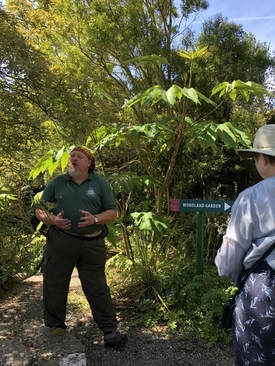
Colin Belton, Garden Supervisor
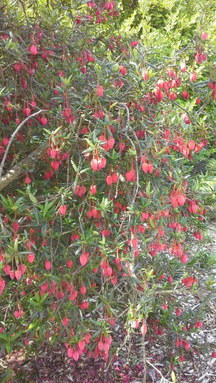
Crinodendron hookerianum
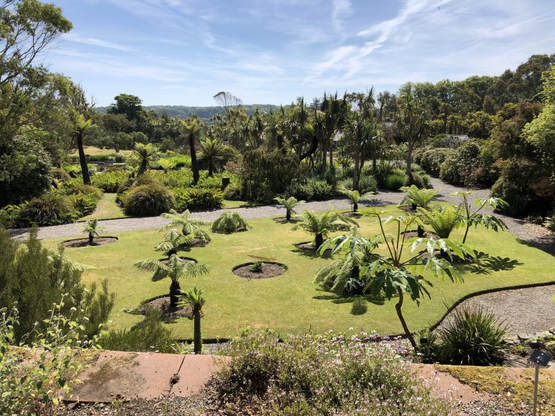
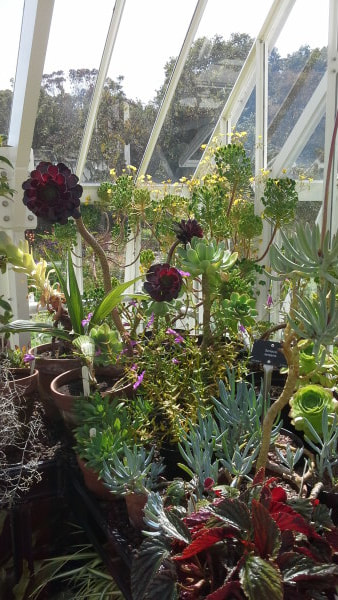
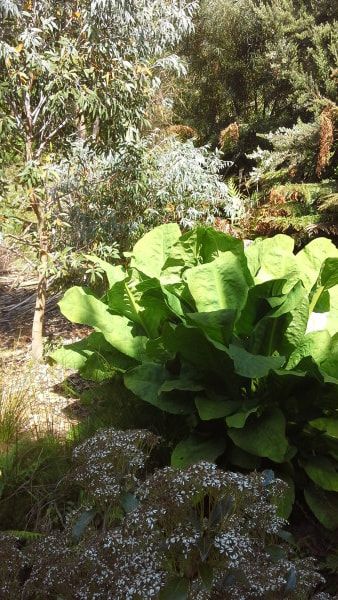
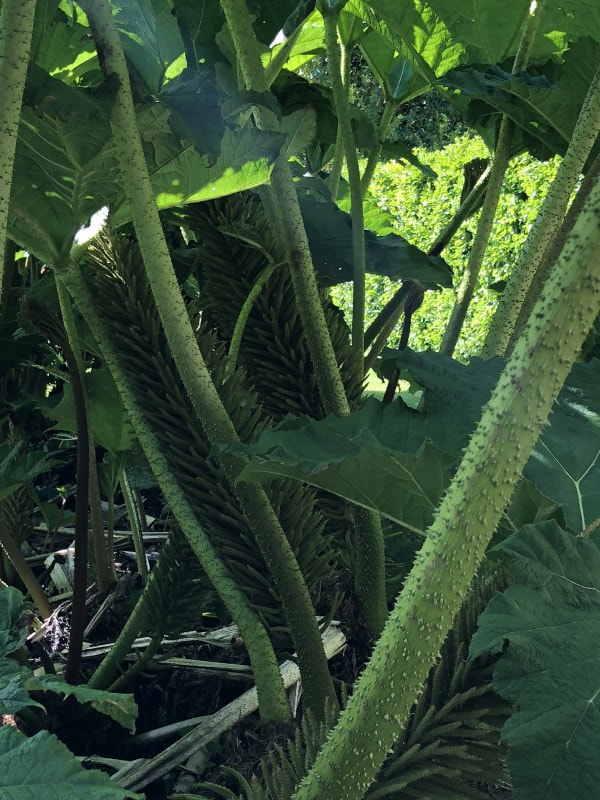
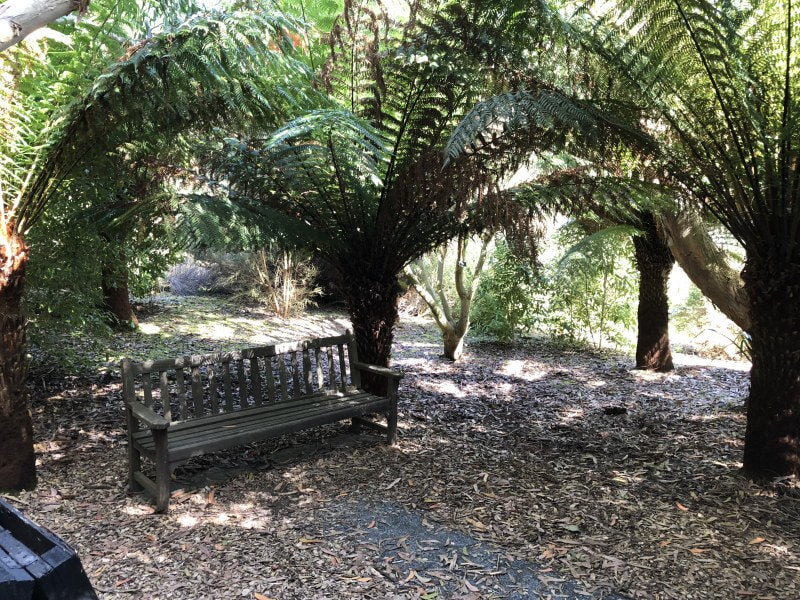
Contemplation area among Dicksonia antartica
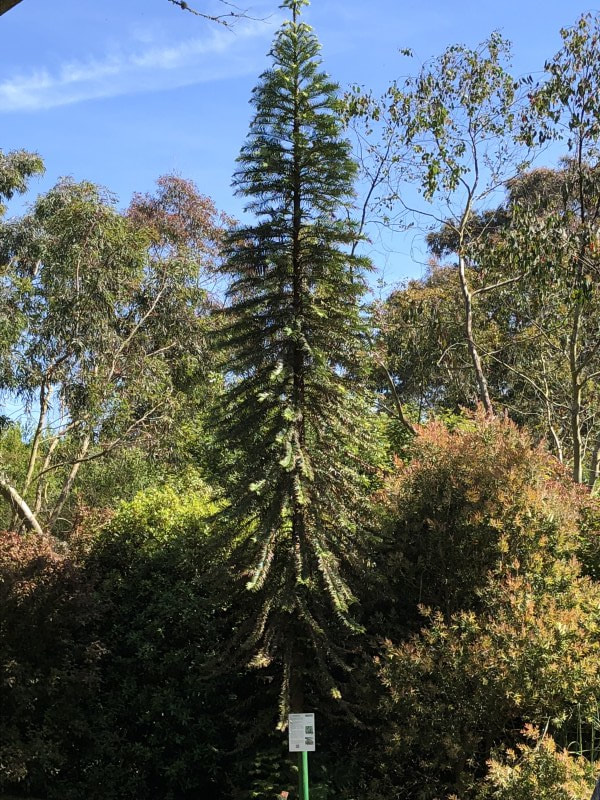
Wollemia nobilis
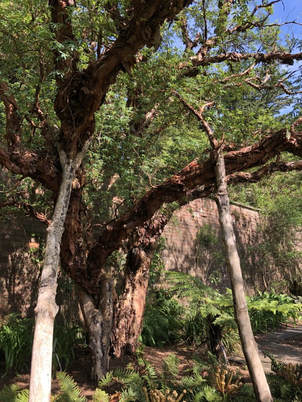
Polylepis australis
Following lunch in Logan’s Potting Shed Bistro our group moved on to Craichlaw, private gardens owned by Andrew and Mary Gladstone and open only by arrangement. Walking past the magnificent Scottish baronial house, originating from the 1500s with the tower house rebuilt in 1854, we entered the gravel garden terrace which leads down to the lower herbaceous borders. Mary, a landscape architect, explained that the garden should really be termed as English, Scottish country houses of this type normally having walled gardens away from the house. She has been creating this garden for 18 years and round the borders on the lower level she has made ‘rooms’ with high hedging to add interest and shelter, some containing topiarised hornbeams and low box hedges and another with a children’s Wendy house. Mary’s vision for the garden was to contain texture and shape and the borders showed this with sculptural cardoons, eryngiums, stately iris and countless others. The gravel garden contained many grasses and the Mexican daisy Erigeron karvinskianus spilled over the stone steps.
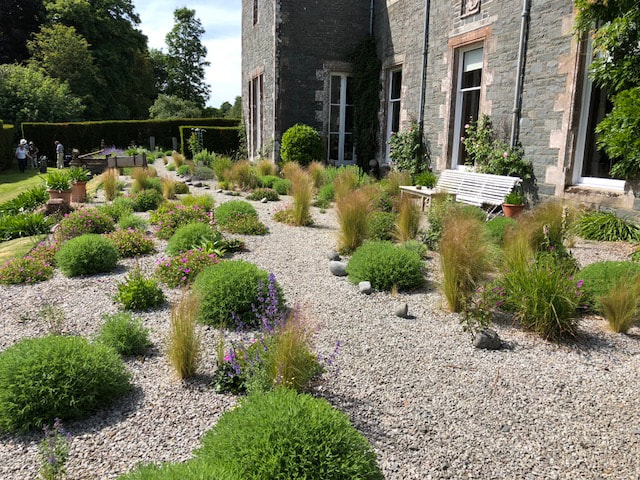
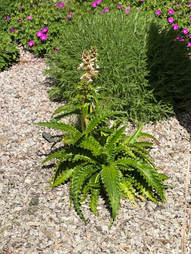
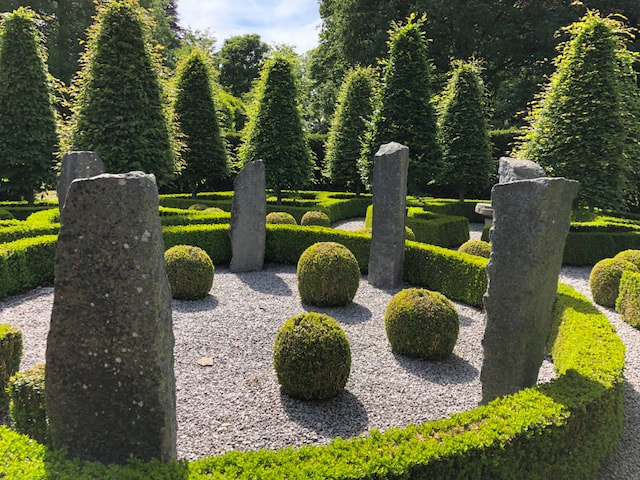
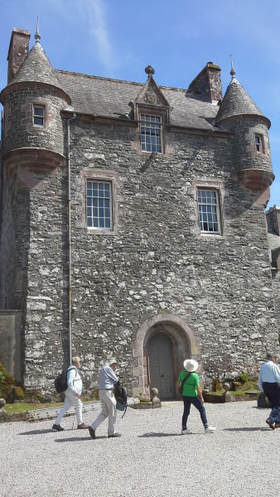
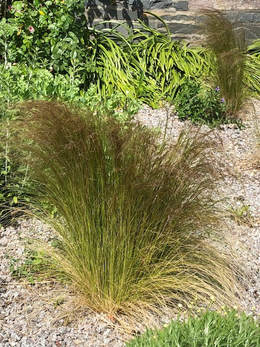
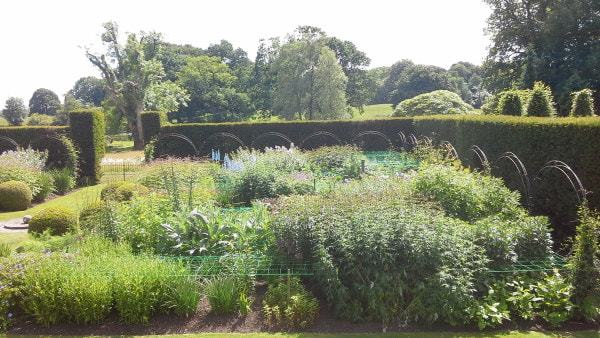
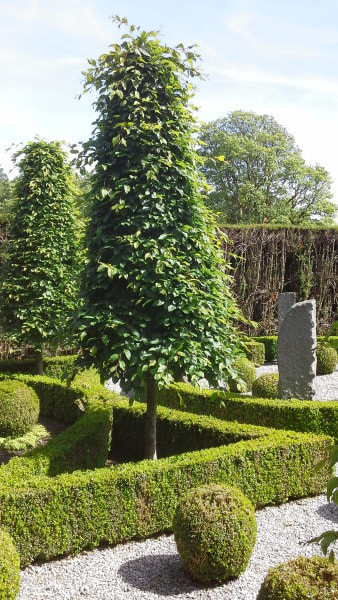
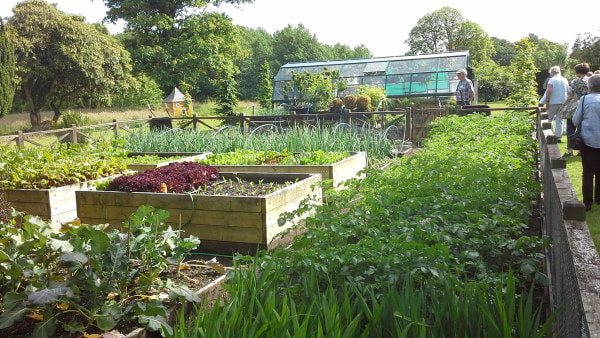
Andrew took us on a tour of the rest of the garden and around the loch which was made in the 1830s and the old ice house, arriving back to the terrace, past the enviable raised-bed kitchen garden and roaming bantams, for some very welcome tea and cake.
The first day was rounded off with an evening talk from Colin Crosbie, erstwhile curator at RHS Garden Wisley and now a consultant horticulturist, called Glimpses of Gardens in Dumfries & Galloway. The talk got under way with the glimpses restricted to words whilst an IT gremlin – a favourite of illustrated talks – prevented us from viewing in any colour other than sepia.
Fortunately Kevin Hughes of Cally Gardens had accepted our invitation to join us for the evening and came to the rescue with a replacement projector and the beauty and clear light of SW Scotland was restored. Colin, a returning son of Kirkcudbright, waxed lyrical on the many extraordinary plants and gardens in the area, some of which we would be seeing, all benefitting from the mild climate, and he looked forward to meeting us again at the Garden of Cosmic Speculation on Day Three.
Day Two
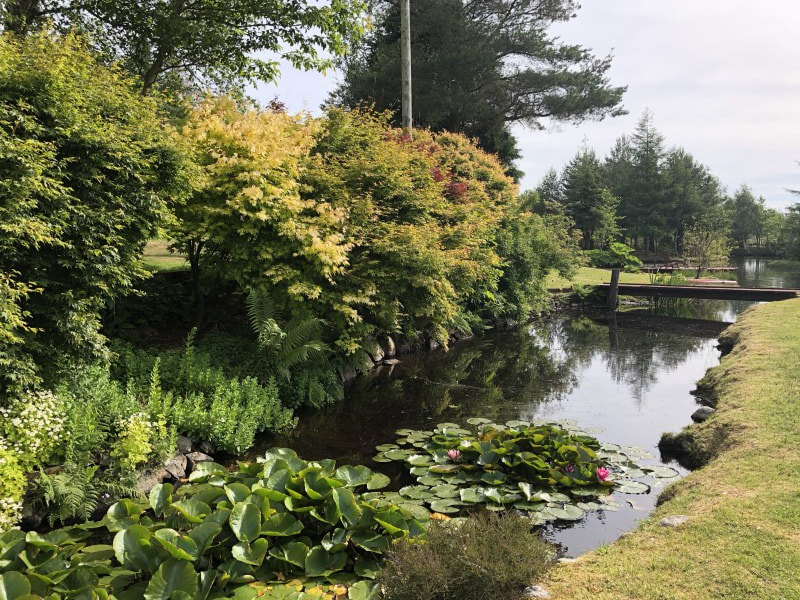
Yet another glorious morning and a scenic drive along the shores of Wigtown Bay to Crinan, an arboretum rather than a garden with lakes and ponds (eight in total) all reclaimed from a tufty grass moorland landscape. This is the endeavour of Enid Innes over 35 years , starting with a small plot around their holiday home and expanding with each escape from the less kind climate of Inverness until she and her husband eventually retired to spend, it would seem, more time planting trees. Enid and her husband Andrew greeted us at the gate, introducing us to Jim who has been with them since the beginning when, as a young, jobbing gardener, he was collared by Enid whilst cutting a nearby hedge. We began to walk through a veritable forest of tulip trees, cornus, numerous acers, Crinodendron hookerianum the Chilean lantern tree, and Embothrium coccineum the Chilean flame tree . The latter was one of the first trees to be planted 30 years ago and Enid admitted that she had not realised that they would all grow so large. Further on we came to a grove of poplars grown to suck up the moisture from the boggy parts of the garden – the boggiest being excavated to make the ponds.
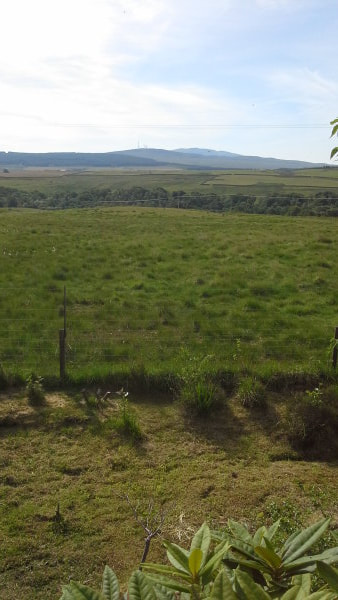
Enid, approaching her 80s, is small and slight and, one imagines, always on the go. Recently they acquired yet more moorland and dug an even larger lake complete with jetty and a small island, planted with trees of course, and a duck house for several ornamental wildfowl.
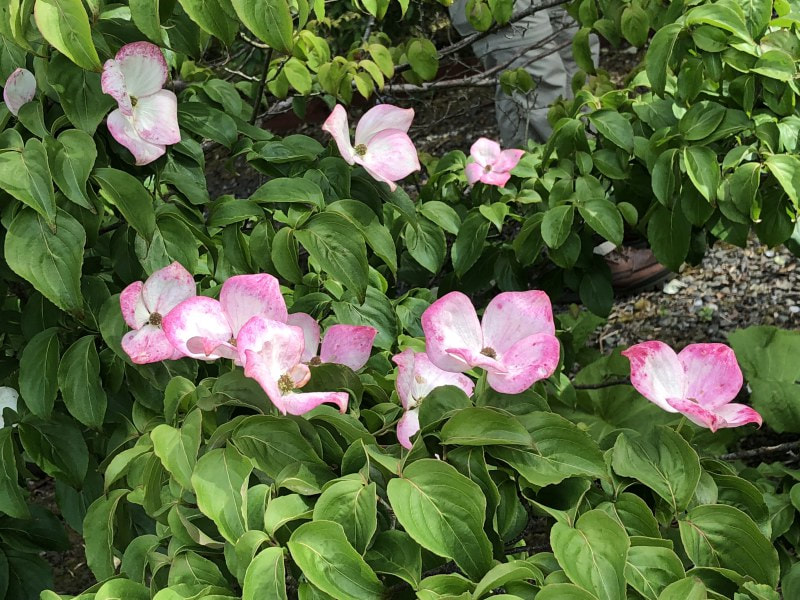
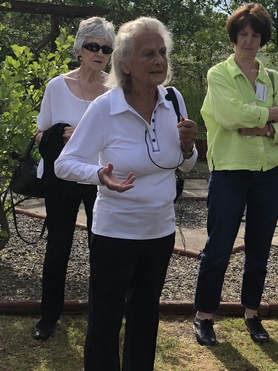
This project having been completed, they are back to planting more trees, the latest of which is a Japanese Fuku, a cut leaf beech and Picea breweriana the Brewer spruce. One has to admire their Capability Brown attitude.
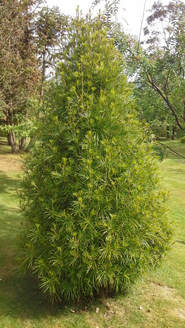
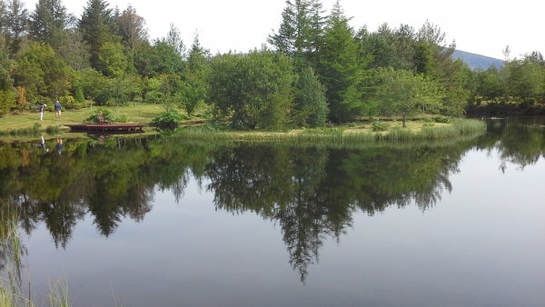
For mid-morning coffee, and later for lunch, the group moved on to Glenwhan which is a garden created by Tessa Knott and her husband in a 103-acre site in a protecting hollow. Glenwhan means rushy glen or green place and it certainly lives up to its name. Into this hollow Tessa has excavated two lochans or large lakes in the boggy areas and filled the rest with rock gardens, woodland, wetland and herbaceous borders. Additionally there are spectacular views over Luce Bay. Tessa, who bought the site in 1979, has created a garden of great variety, enclosing the hollow from harsh winds by planting native trees around the edges and interspersing this with unexpected finds such as Cardiocrinum giganteum the giant lily, standing in full glory in dappled shade under the tree canopy, as well as sculptures – wild boar being a theme – monuments and viewing platforms with benches. Everywhere you looked in Glenwhan was colour and variety from shrubs, small plants and trees such as Betula ermanii Erman’s birch with its peeling bark, and Acer davidii to Primula vialii, looking like a red hot poker, and Prostanthera cuneate the Tasmanian mint bush, and weaving their way through all of this were numerous unusual honeysuckles.
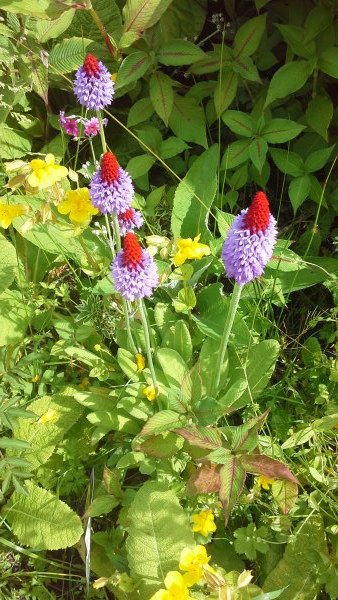
Primula viallii
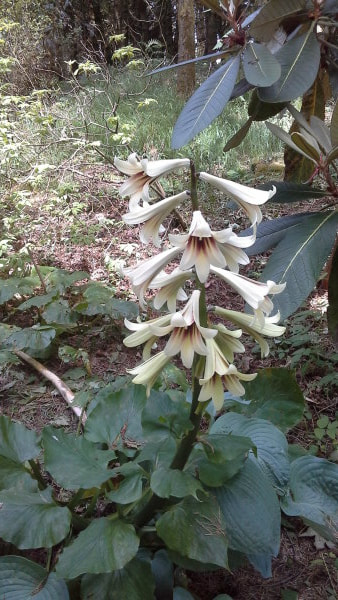
Cardiocrinum giganteum
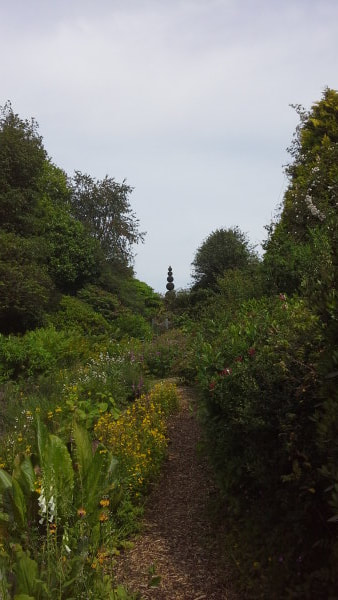
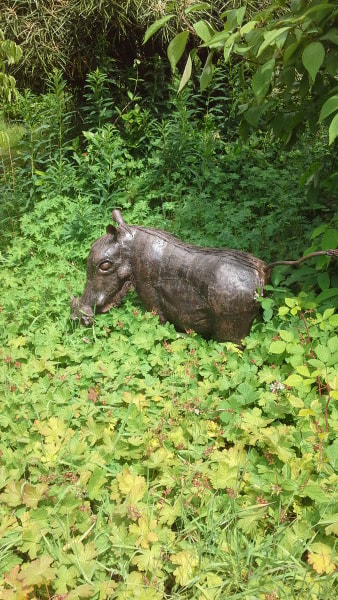
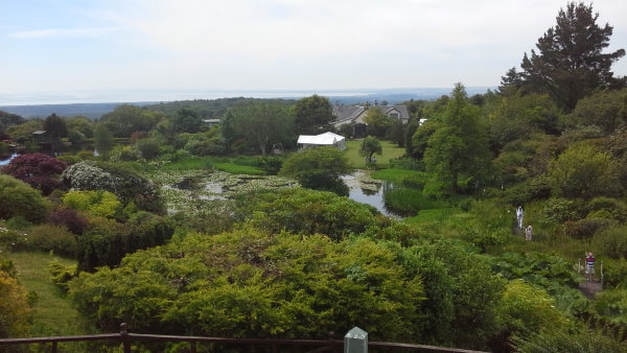
View over the garden to Luce Bay
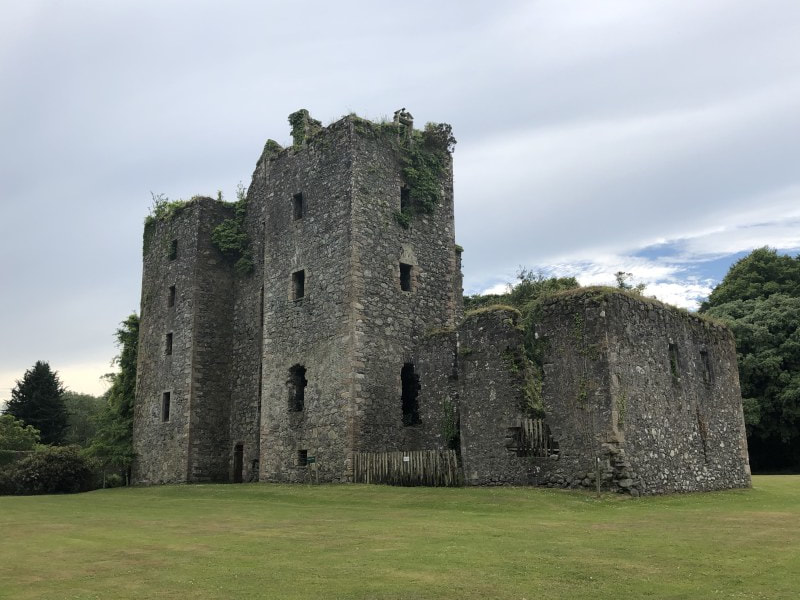
With the ruins of the castle as a backdrop we met the head gardener, John McArthur of that Ilk, who gave us a brief history of the gardens which were started in 1730 by the second earl, to take his mind off the loss of his castle, and restored and extended in the mid 19th century by the eighth and tenth earls who were generous patrons of plant-hunting expeditions. In 1850 specimen trees were introduced, of which there are 21 champion trees. A champion tree is the largest tree of its species within the British Isles, in either its height or its girth. Around the same year, the famous collection of rhododendrons was established, as well as a vast collection of azaleas, camellias, magnolias and embothrium. Plant hunter Sir Joseph Hooker, later to be director of the Royal Botanic Gardens at Kew, sent many unusual specimens to Castle Kennedy and some of his rhododendrons, including R. arboreum from Nepal, have reached enormous heights.
After an excellent lunch we boarded the coach and headed off to Castle Kennedy Gardens, our third of the day and fortunately sufficiently different from the other two that they did not all blend into one. Castle Kennedy is part of the Lochinch Castle estate of the Earl and Countess of Stair. The original 14th century castle burnt down in 1716 and Lochinch Castle was built in the 19th century Scottish baronial style some distance from the original and sits between the Black and the White Lochs. The two lochs meet at the Castle Kennedy end to form a moat, presumably to keep the reivers out.

John McArthur of that Ilk
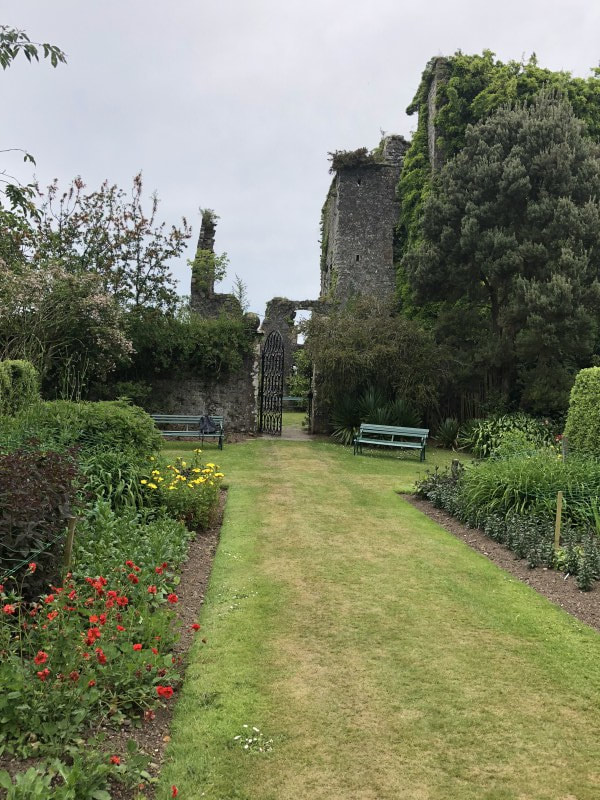
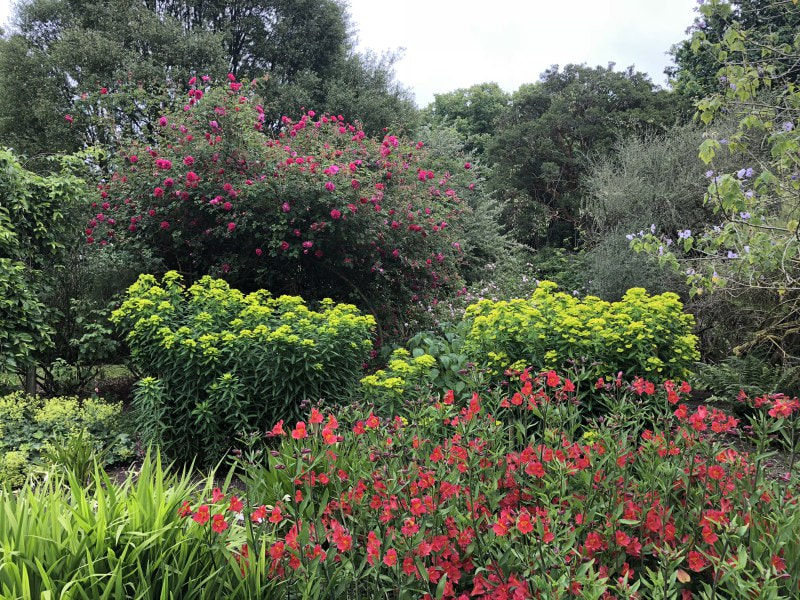
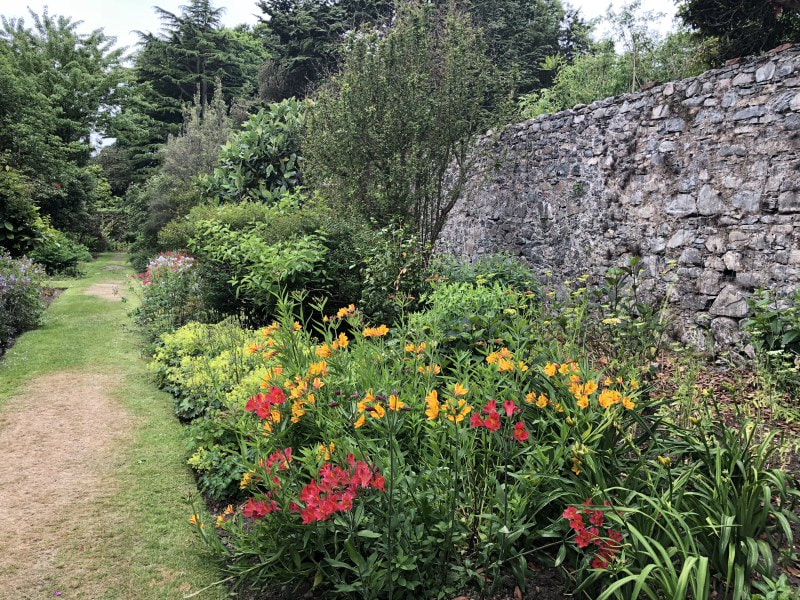

Argyrocytisus battandieri
John, who looks after the gardens with the help of 2 others, directed us to start our exploration in the walled garden near the ruined castle. This exemplified the type of Scottish garden Mary Gladstone spoke of, away from the house. Intersected with grassy paths it contained many Mediterranean shrubs, such as Argyrocytisus battandieri the pineapple broom , roses, herbaceous plants and southern hemisphere trees – a cool and scented haven on a hot afternoon. The group split up to wander at will for two hours which was just enough time to be able to see the magnificent trees – holm oaks Quercus ilex, noble firs Abies nobilis, and towering monkey puzzles Araucaria araucana – as well as the round pond covered in water lilies and surrounded by rhododendrons and azaleas, some still in bloom, and down to the loch to look across at the ‘new’ castle and a field of Belted Galloway cattle in the distance. Yes, and just enough time to get back for another chance to fill up on tea and cake (with scones, cream and jam this time).
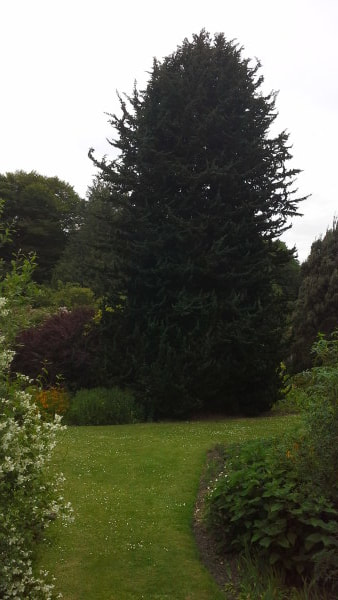
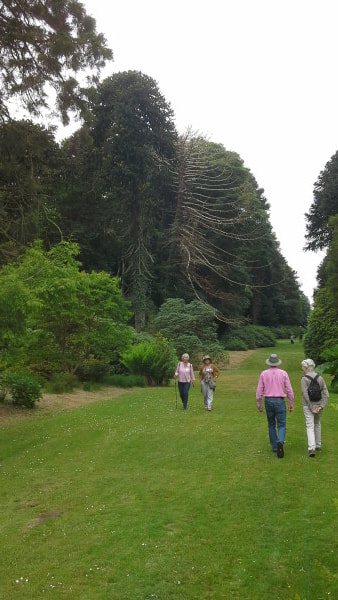
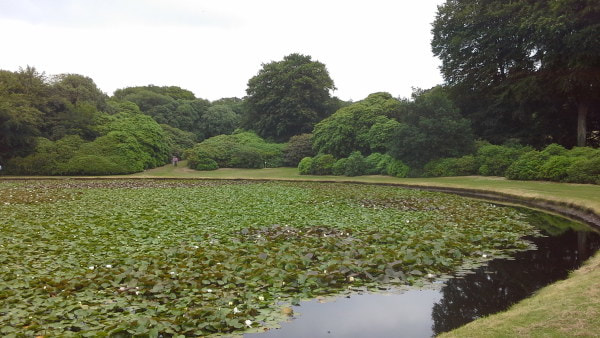
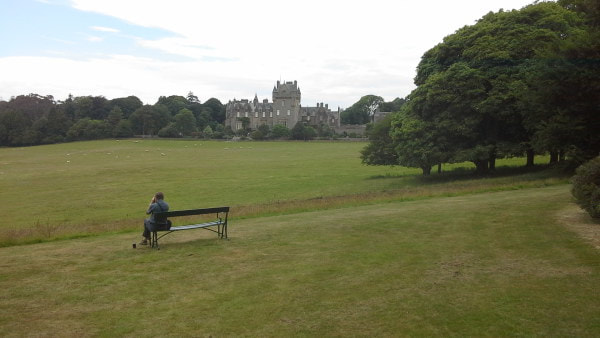
Day Three
Another hot day and I still had not seen a red squirrel – I have been misled about Scotland – and off to Kirkcudbright to visit The Limes, the 1.5-acre home of Carolyn and David McHale, members of the Scottish Rock Garden Club for whom they collect and distribute vast quantities of seeds annually. From the outside we were approaching a regular suburban garden; inside it was anything but. To the left was a woodland glade area and to the right something similar but incorporating different levels and a rockery leading down to a small, lily-covered pond. To the central, sunny lawn one’s eye was led to a vase-shaped sculpture of layered slates, of a type we had seen in several other gardens, all the work of Joe Smith, and on to the gravel border and rockery around the house.
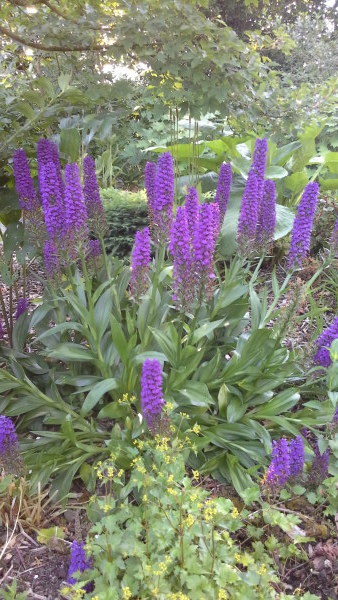
Dactylorhiza
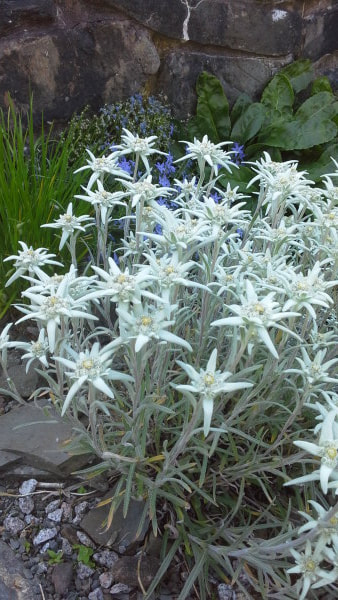
Leontopodium nivale
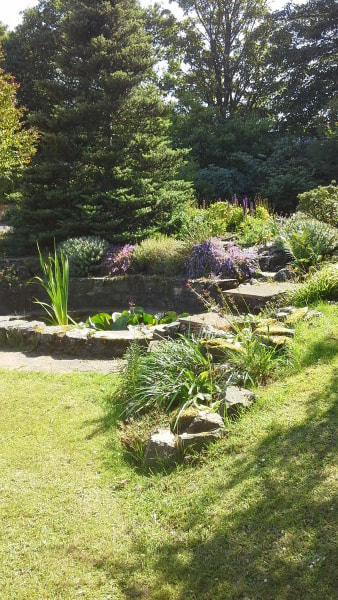
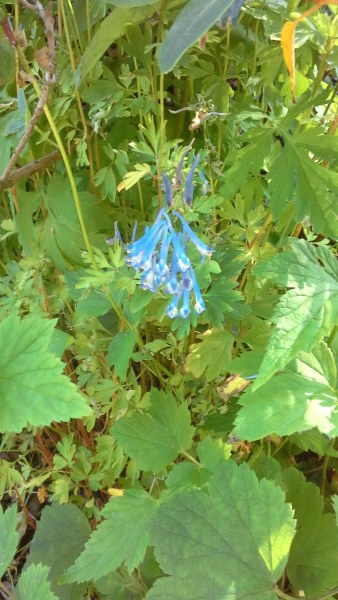
Corydalis
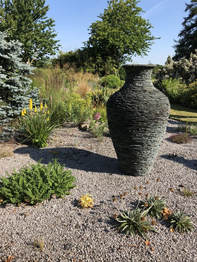
David freely admitted that he was the labourer and Carolyn had the knowledge. This knowledge poured out of her as she took us round. Several coveted plants turned out not to grow down south, being too dry, and the lament of each of the gardens visited “we need rain” was echoed here. Despite this the garden was abloom with delicate corydalis, a striking dactylorhiza, Gentiana lutea, the great yellow gentian, Brunnera macrophylla ‘Alexander’s Great’ with its sculptural leaves and tiny blue flowers and roscoea the hardy ginger as well as peonies, cornus, ‘Black Lace’ elder, roses, alliums and edelweiss. And vegetables: enough to feed an army and keep a colony of rabbits happy for the summer with not a slug in sight. Dispirited with my own garden, I took comfort in a delicious scone and blackcurrant jam before we moved on to another private garden.
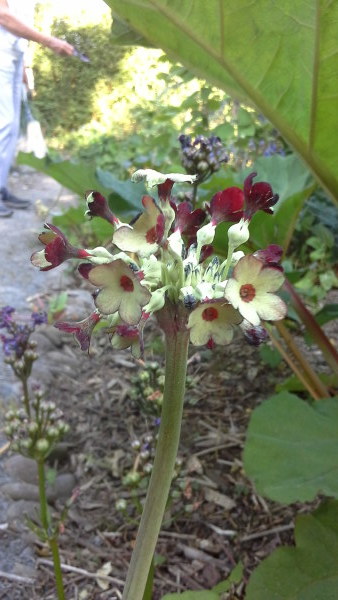
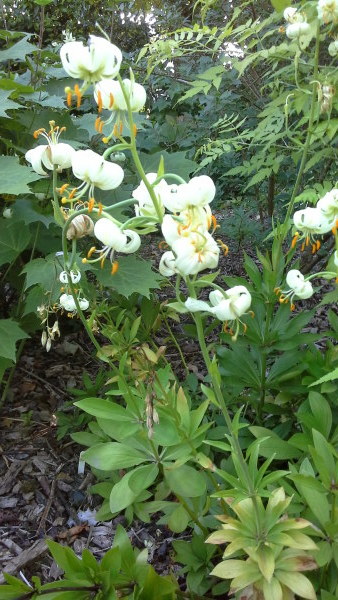
Martagon lily
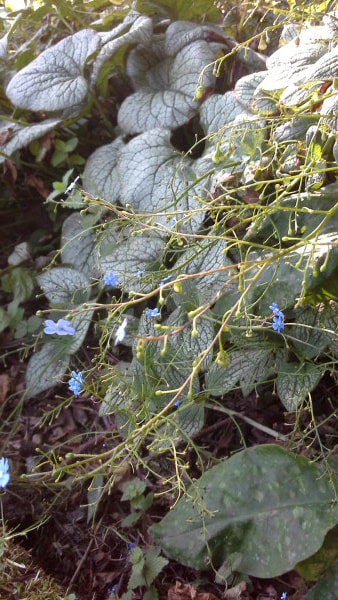
Brunnera macrophylla ‘Alexander’s Great’
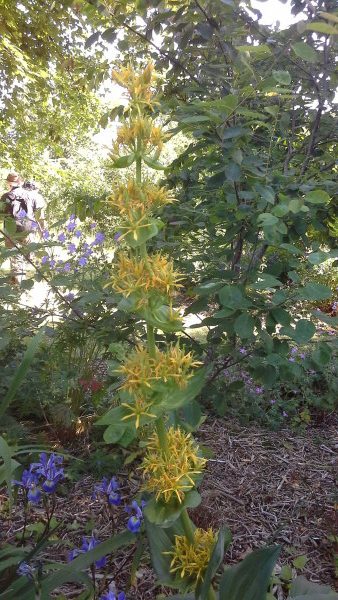
Gentiana lutea
3 Millhall overlooks and leads down to Kirkcudbright Bay. We arrived in blazing sunshine and as the light danced on the water and sail boats tacked in the breeze it could have been the Fowey estuary on a Cornish summer day. At the door of his house we met Alan Shamash who led us round the back of the bungalow, passing a male and a female Actinidia (kiwi fruit), to the start of his amazing 6-acre garden, created over 25 years and stuffed full of southern hemisphere plants and trees. Wandering along the gentle incline of the zigzag pathways it was hard not to be distracted by the stunning views as the sun sparkled on the incoming tide. At every bend there was a view and a strategic rock or bench on which to sit until, at last, one came to the shore’s edge where the water lapped in little rock pools and gullies. Back up the slope there were eucalyptus, a Metasequoia glyptostroboides ‘Gold Rush’, Cornus Kousa ‘Miss Satomi’, a vivid blue Campanula lactiflora, many hydrangeas and peonies in full bloom and much more besides. A tranquil and very beautiful spot.
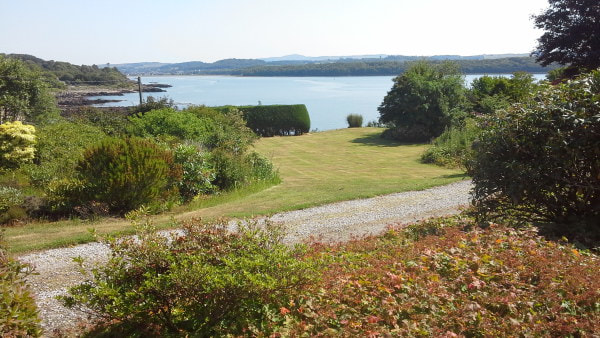
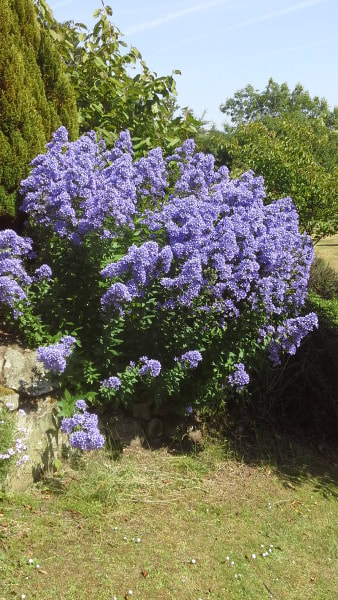
Campanula lactiflora
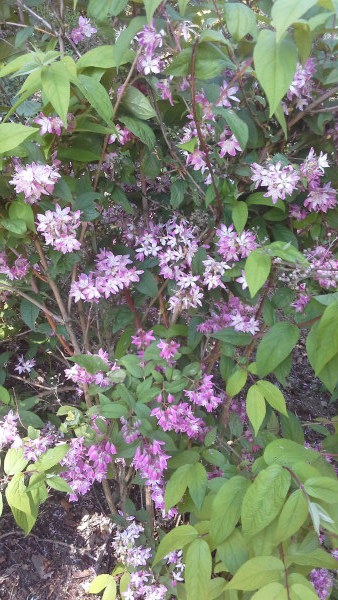
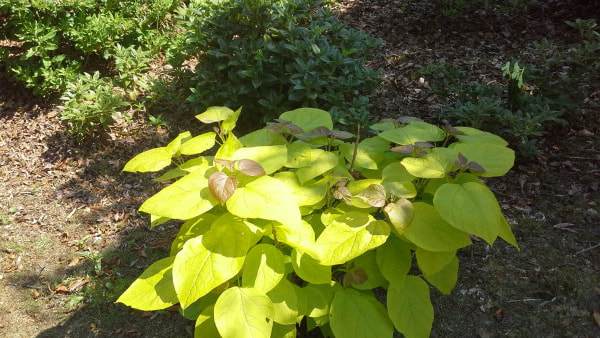
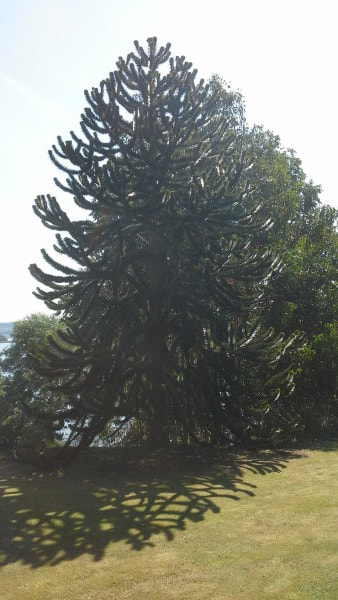
Araucaria araucana
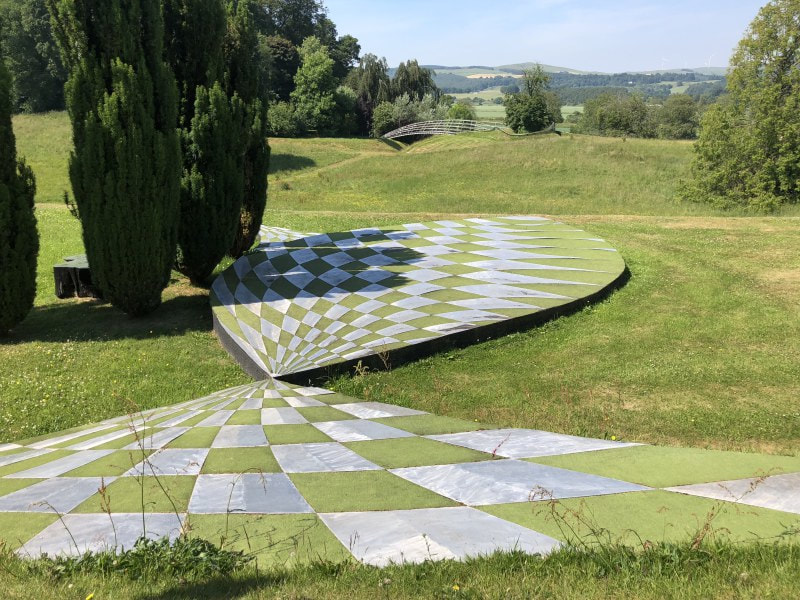
The Garden of Cosmic Speculation was our afternoon visit after having stopped for lunch en route. We were met there by the head gardener, Alistair Clark, and our Monday night speaker, Colin Crosbie. Alistair gave us the background: the garden was the creation of designer Maggie Keswick Jenks, daughter of Sir John and Lady Keswick, and her husband, Charles Jenks, the writer, landscape designer and artist. The concept of the garden came about after she was diagnosed with breast cancer and, at the same time, she and her husband founded the charitable trust which now run Maggie’s Centres helping to make the lives of cancer sufferers and their families more bearable. To me, this was a garden to commune in, to look upon or walk through; a garden of curves, wide open spaces, enclosed wooded areas and serpentine ponds, culminating in a garden of the senses laid out as a parterre. It is extraordinary and most certainly an experience.
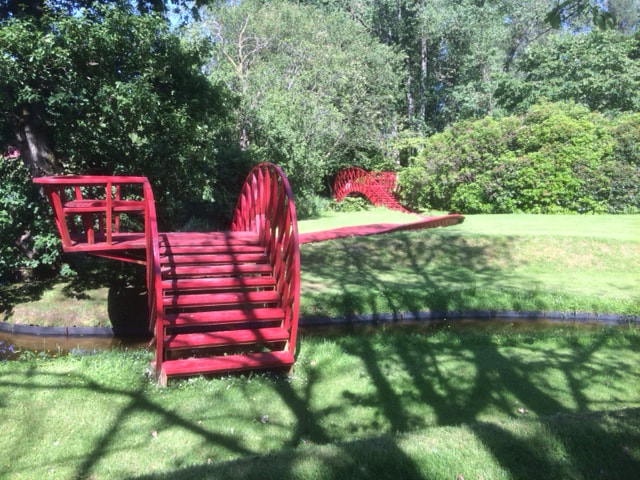
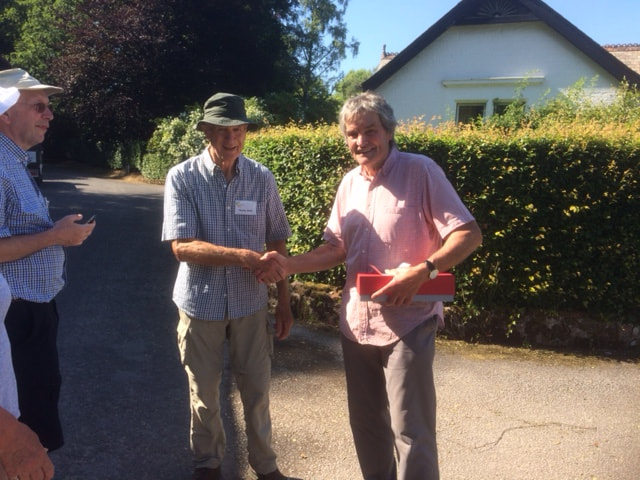
Thanks to Alistair Clark, Head Gardener (right)
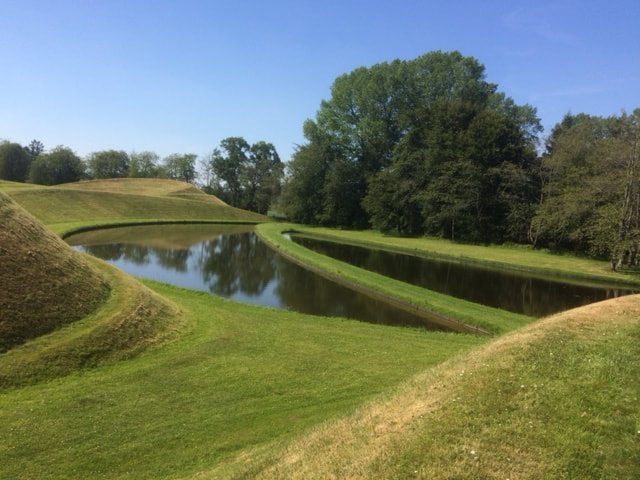

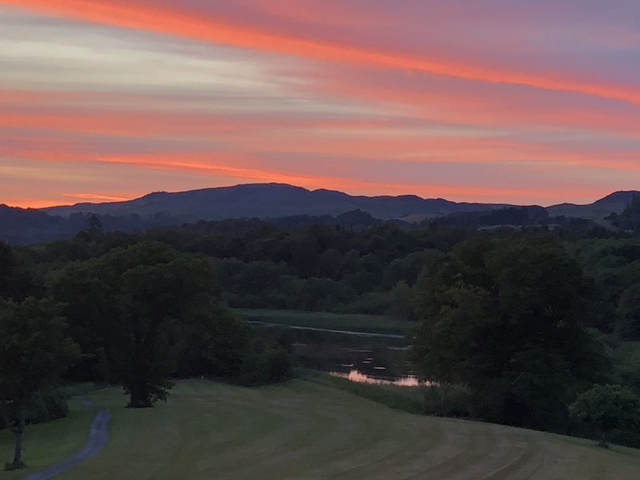
Cally Palace Hotel
We arrived back to a Pimms reception courtesy of Cally Palace Hotel followed by our last dinner together.
Day Four
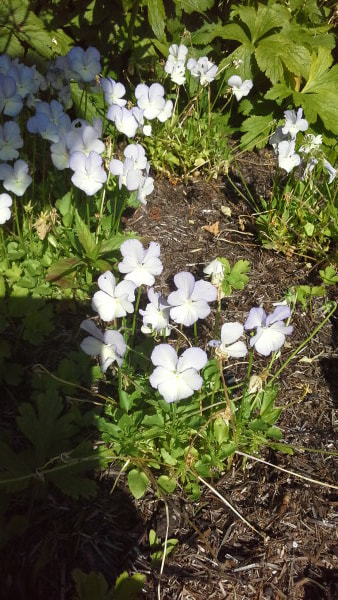
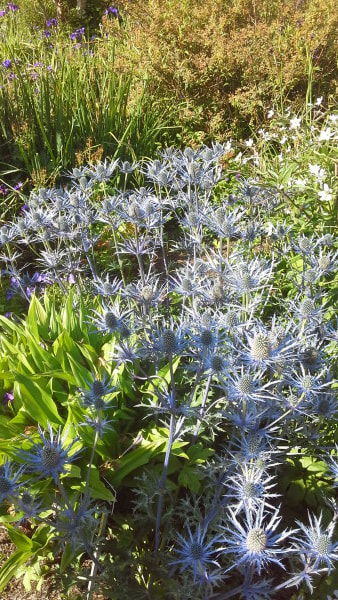
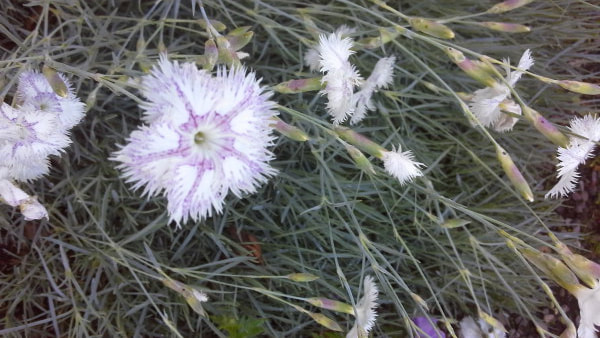
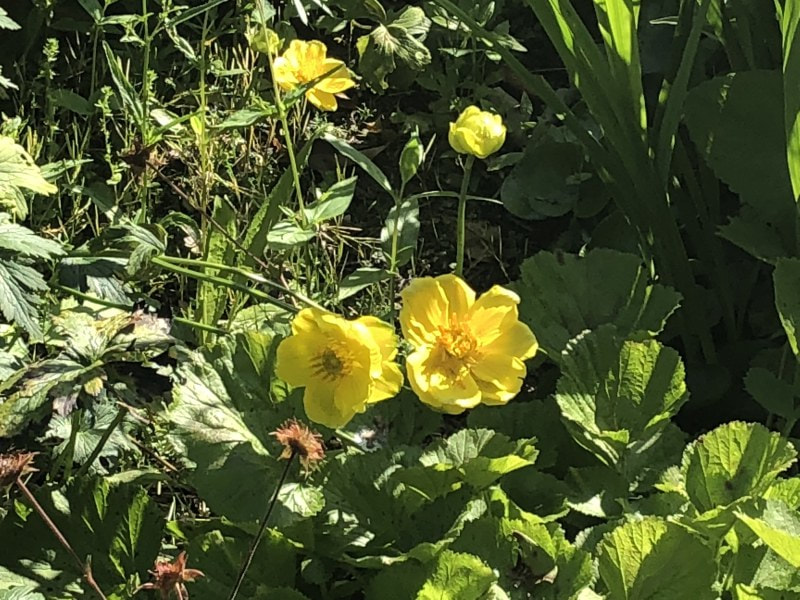
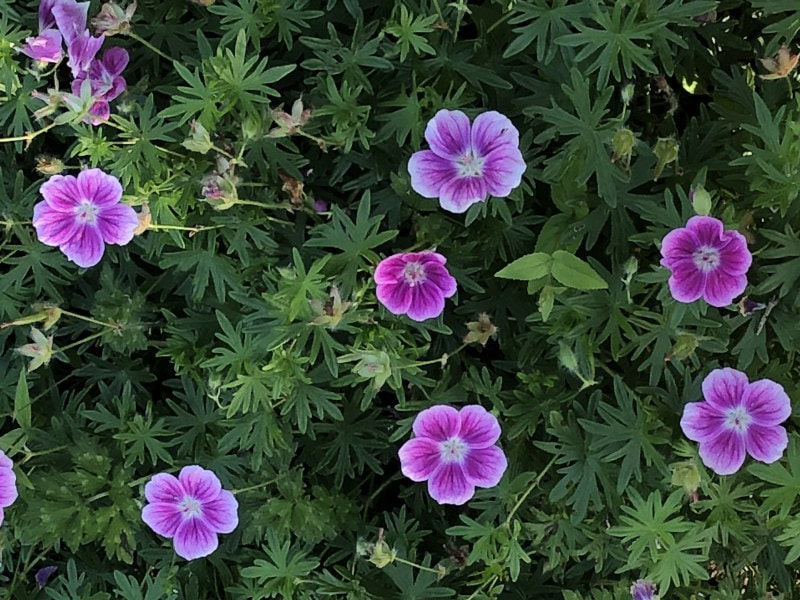
A late breakfast, by our standards, and we waved goodbye to the hotel and the hiding red squirrels and set off in our various modes of transport to visit Elizabeth MacGregor’s Garden and Nursery on the edge of Kirkcudbright. Another beautiful walled garden packed full of colour and structure with pergolas, hedging and a huge central terracotta planter filled with an exuberance of blue hardy geranium. Everywhere were violas, for which Elizabeth is renowned, and stunning, vividly blue eryngium, astrantia, tradescantia, iris and much more. Unfortunately all of these could be purchased from her adjacent nursery and some of us got a little carried away. A perfect end to a wonderful few days.
Special thanks to member-organisers, Charles and Jennie Smith
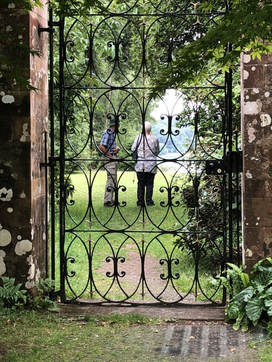
Charles and Jennie at Castle Kennedy
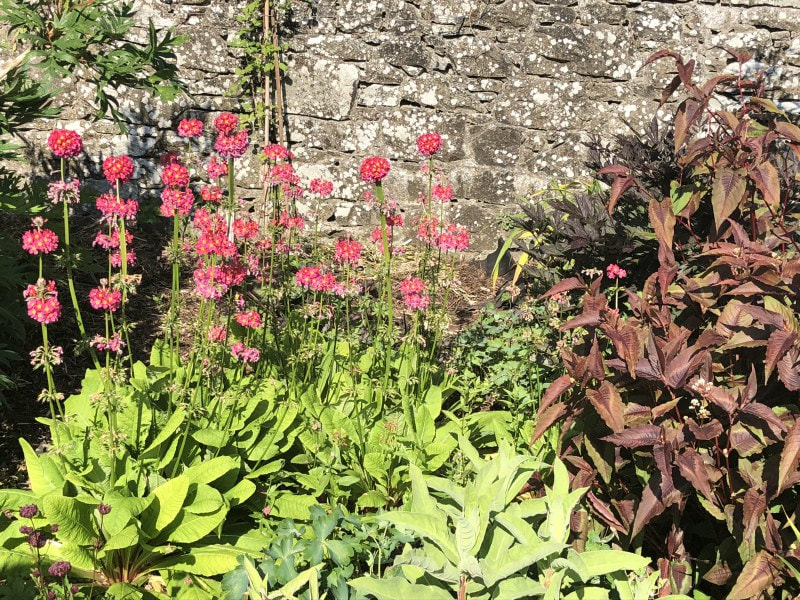
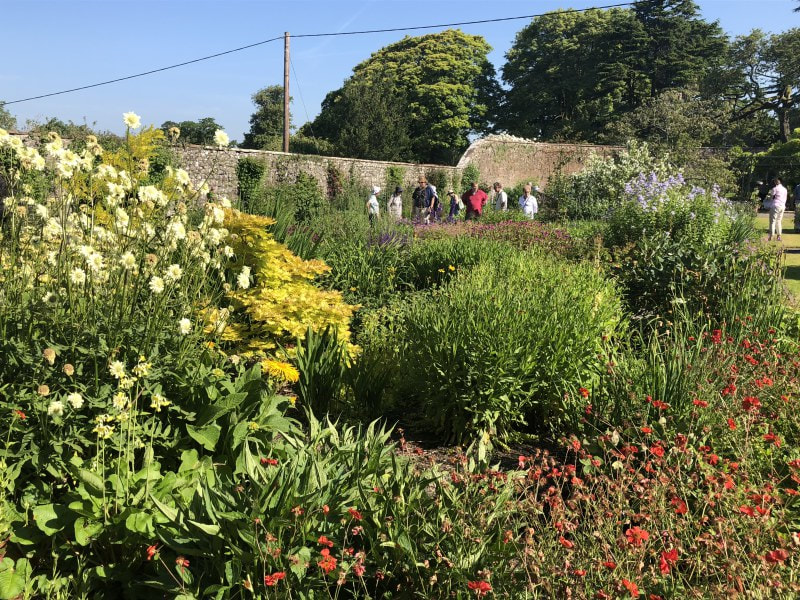
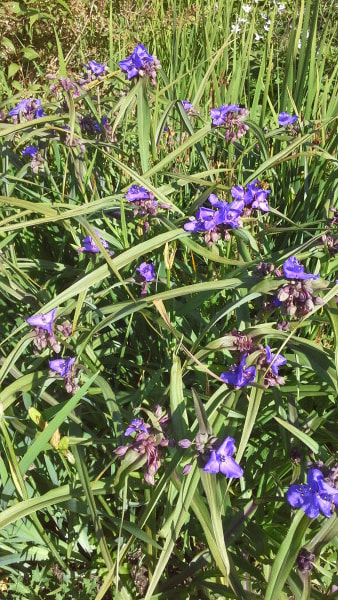
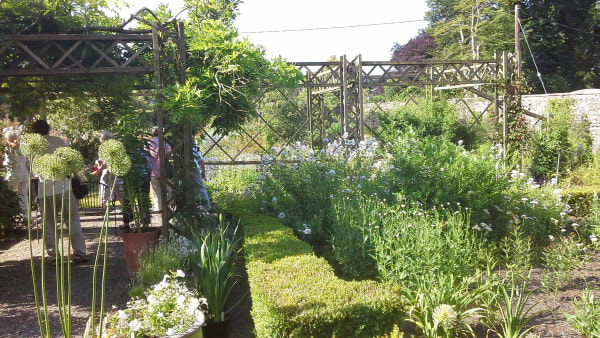
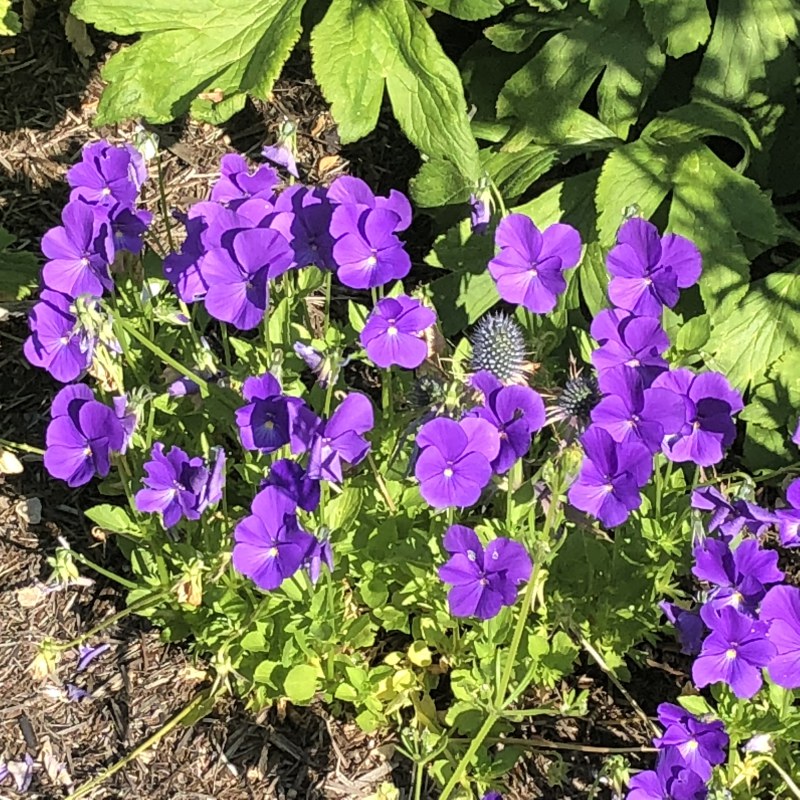
Viola ‘Queen Fabiola’
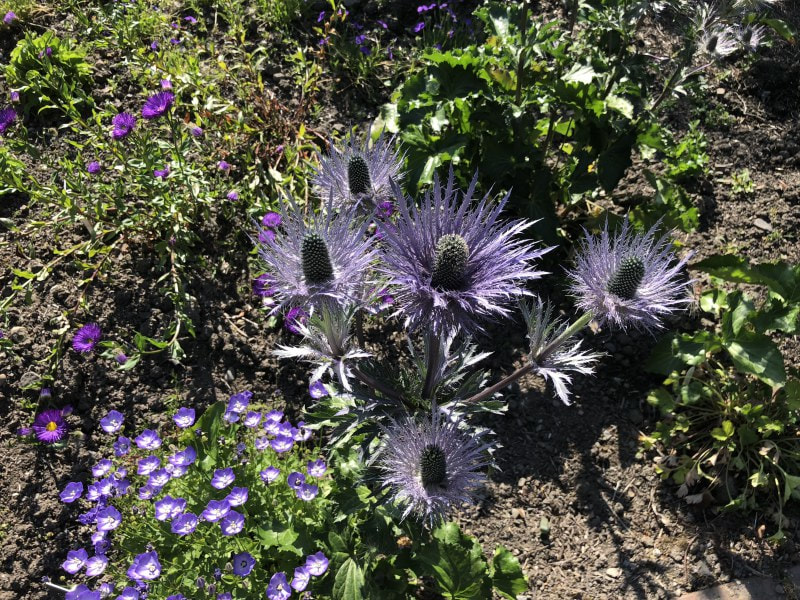
Eryngium alpinum ‘Slieve Donard’
Briony Marriott
Photos: Briony Marriott; Susie Warwick, Heather Martin

